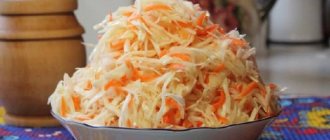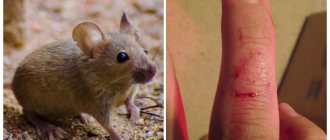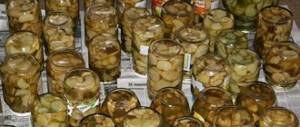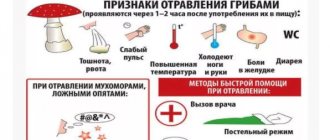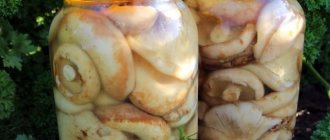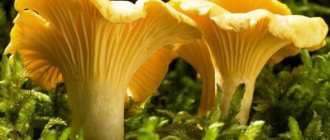Good afternoon, many will be interested in understanding their health and loved ones, and I will tell you my experience, and we will talk about whether it is possible to get poisoned by milk mushrooms. Most likely, some details may differ, as was the case with you. Please note that you should always consult with highly specialized specialists and not self-medicate. Naturally, you can quickly find the answer to the simplest questions and diagnose yourself. Write your questions/suggestions in the comments, and together we will improve and supplement the quality of the material provided.
Treatment in a medical facility
After collecting an anamnesis (interview) in the hospital, the poisoned person will have his stomach washed out. Depending on the level of consciousness, this manipulation can be performed either independently or through a nasogastric tube. Gastric lavage is best done in the first two hours after the appearance of clinical signs of poisoning. The dose of liquid for gastric lavage should be 8–10 liters (for an adult).
In addition to gastric lavage, in the hospital they will definitely cleanse the intestines with an enema. It also needs to be done in the first two hours after signs of poisoning appear.
After such unpleasant manipulations, the doctor will prescribe the patient drugs for enterosorption:
- Activated carbon;
- Polyphepan;
- Enterodesis;
- Enterosgel;
- Smecta.
Laxatives are prescribed immediately after gastric lavage at a dosage of one gram per kilogram of body weight orally. If vomiting occurs, this drug must be taken again after 30–40 minutes.
The next stage of treatment is forced diuresis with the help of diuretics (Furosemide).
Ringer's solution or isotonic sodium chloride solution is administered intravenously to eliminate dehydration and prevent collapse (acute vascular insufficiency, accompanied by a drop in arterial and venous pressure). Drugs to increase blood pressure (Mezaton, Noradrenaline) are also used.
It should be remembered that only specialized medical care can prevent possible serious complications. And lost time can be fatal for the patient.
False breast
Among the false milk mushrooms there are:
- pepper milk mushrooms;
- violin;
- camphor milk mushroom.
The first two types have dry, depressed, cream-colored caps. It should be noted that these types of mushrooms secrete a significant amount of milky juice.
Pepper milk - its name speaks for itself, it has a burning peppery smell.
The violin can be distinguished by its characteristic creaking sound when a sharp object is passed over the mushroom cap.
Camphor milk most often causes poisoning. This is explained by the fact that a huge amount of muscarinic substances accumulates in it. Initially, the camphor milk mushroom has a characteristic smell, which changes to a coconut smell as the mushroom ages. If you press on the surface of the cap of such a mushroom, a dark golden-brown spot will appear.
Characteristics of the mushroom mushroom
The body consists of two parts: the cap and the legs.
hat
The skin on the cap is mucous, white with a milky tint. Sometimes there may be brownish spots. The plates are cream. The diameter varies from 5 to 20 cm. In a young representative of the mushroom kingdom, it is flat, slightly convex, and as it ages, its edges turn inward, forming a kind of funnel. The structure is dense.
Pulp
A specific fruity aroma emanates from the pulp. It is quite dense, stable, and white. Inside there is a milky juice, which, when broken, flows out, turning yellow. The plates are quite wide and frequent. The spores are yellowish.
Leg
The height of the leg is 4-7 cm, the size ranges from 2 to 5 cm. It is hollow inside and has the shape of a cylinder. May be yellow or white. In old milk mushrooms, the plates on the stem are always painted yellow.
Why do salted mushrooms taste bitter? What to do?
In general, in order for the mushrooms to be salted, they need to be allowed to stand for a month or a month and a half. But if you have already opened a jar of mushrooms and they are bitter, then you can try to slightly correct the taste. To do this, remove the mushrooms from the jar and rinse with cold water. Let it drain and place in a deep plate, add chopped onion, vinegar and sunflower oil. Mix everything and serve like a mushroom salad. Onions, vinegar and sunflower oil will remove the bitterness.
add to favorites link thank
Almost all mushrooms that are used for pickling require soaking, and not nominally, but thoroughly: the water must be drained several times. This is done for several important reasons; I think it makes no sense to list them all; housewives already know this. But I will still voice one reason: soaking reduces bitterness. Yes, yes, insufficiently soaked mushrooms will most likely taste bitter. It's not dangerous, but it's not very tasty.
To neutralize slight bitterness, it is recommended to add onions and sunflower oil to the mushrooms. The bitterness, of course, will not go away, but it will be felt much less.
add to favorites link thank
Lamellar mushrooms are usually salted. These are milk mushrooms, saffron milk caps, pigtails, white mushrooms, and volushki. All mushrooms, except saffron milk caps, must be soaked before salting, milk mushrooms for 2-3 days, changing the water to remove bitterness. Volnushki and whitefish can be soaked for less than a day. You can boil the mushrooms before salting, but then the forest smell and taste of the mushrooms are lost. Soaking salted mushrooms to reduce bitterness is no longer useful. They are best used for preparing fillings for dumplings, pies, and pies. To do this, fry the mushrooms in oil with onions and mix with mashed potatoes. You can add mushrooms to cabbage soup made from sauerkraut, or to solyanka with cabbage and potatoes.
add to favorites link thank
Since you did not indicate which mushrooms are bitter, I dare to assume that these are salted milk mushrooms. Salted milk mushrooms can taste bitter for only one reason: if they are not soaked enough before salting.
Before salting, you must soak the milk mushrooms for several days, changing the water periodically so that the mushrooms do not ferment.
If the milk mushrooms are poorly soaked, then you won’t be able to completely remove the bitterness, but you can mask it a little.
We recommend reading: What Temperature to Set for Sausage Storage
Wash the milk mushrooms and add onion, sunflower oil and vinegar to them, this will slightly hide the bitterness.
Salted mushrooms can taste bitter for only one reason. Before salting, they were not soaked long enough, or the water was not changed frequently. If this happens, then unfortunately the ready-made salted mushrooms will be bitter. It's not very tasty and not everyone likes it. Before serving, you can season it with lemon juice or apple cider vinegar in addition to onions and sunflower oil. This will add a pleasant sourness and neutralize the bitter note. Before adding the onions to the mushrooms, marinate them for about twenty minutes, sprinkle with sugar and lemon juice.
To prevent salted mushrooms from becoming bitter, they must be thoroughly cleaned and pre-soaked in cold water for at least a day, and the water must be changed periodically. During cooking, the water after boiling should also be drained, and then cook the mushrooms until tender. Perhaps the salted mushrooms are bitter due to improper preservation (at high temperatures, high humidity, exposure to sunlight, etc.)
add to favorites link thank
Where do milk mushrooms grow?
With which trees do they create mycorrhiza - a symbiotic relationship between mycelium and roots? The milkweed has a special love for deciduous trees. Birch is especially attractive to him. Therefore, the first choice landscape for their growth is mixed forests and birch forests. They also grow among coniferous trees, but much smaller.
The type of soil, its moisture content and the penetration of sunlight play a special role. There are several types of milk mushrooms that have different needs. But they all agree on one thing: they prefer more humid and sun-warmed areas, covered with grass, moss or rotten leaves.
What to do if home-picked milk mushrooms become covered with a white coating?
For several years now in the fall, my relatives have treated me to a jar of salted milk mushrooms. These are white milk mushrooms, salted in the usual cold way in a tub and transferred especially for me into a glass jar.
Since I am not a particular fan of milk mushrooms, I don’t eat them right away, and this jar continues to be stored in the refrigerator for some time.
But over time, a white coating begins to form on the surface of the mushrooms, and even the brine itself in the upper part of the jar becomes whitish-cloudy.
If anyone knows, tell me what it is? Mold? Or discharge from the garlic used in salting? And can such mushrooms be eaten?
Yes, the white coating in salted mushrooms is mold, but you shouldn’t throw away such mushrooms, you just need to rinse them in running water and you can safely eat them or (if there are a lot of mushrooms) replace the brine in them.
I myself don’t particularly like salted mushrooms, but we buy saffron milk caps and milk mushrooms for my husband, he likes them salted. He salts himself and doesn’t let me near him. If such a white coating appears on the milk mushrooms when they stand for a long time, then the husband simply washes the milk mushrooms and eats quietly. He believes that there is nothing special, the coating is not harmful.
I used to worry, I even tried to throw out the milk mushrooms that had a white coating, but now I treat them with understanding, it’s okay. Yes, and in the village I had to see this with my relatives; my aunt also washed milk mushrooms before cutting the mushroom salad. This plaque is harmless, but you just don’t want to eat it.
Oh, how I envy you) There have been no salted milk mushrooms on our table for several years now. I can give you some advice - to prevent this embarrassing film from forming, place a leaf of horseradish on top, and then change it after a while. If there is no horseradish leaf, you can sprinkle mustard (ordinary powder) on top, and then simply remove the top mushroom along with the mustard. Once upon a time, our neighbor poured vodka over mushrooms in a jar and said that it helped with long-term storage. They also put a clean cloth on top, then throw it away. Sometimes the brine is drained and refilled with new brine.
And before eating, just rinse the mushrooms with water if mucus has formed. After all, the jar contains organic matter). They can also be used after heat treatment, for example, in a pie with potatoes or sauerkraut and milk mushrooms.
Yes, the white coating in salted mushrooms is mold, but you shouldn’t throw away such mushrooms, you just need to rinse them in running water and you can safely eat them or (if there are a lot of mushrooms) replace the brine in them.
Edibility of milk mushrooms
As already mentioned, milk mushrooms are considered conditionally edible. It has a characteristic smell and taste. The dried mushroom contains 32% protein, riboflafin and vitamin D.
Mushrooms are considered dietary food. And if you replace meat dishes with them, this will prevent the occurrence of cardiovascular diseases.
But not everything is as wonderful as we would like. If prepared incorrectly, there is a high risk of infection with botulism. To avoid this trouble, you need to properly prepare the milk mushrooms - they need to be soaked in water for several days, constantly changing it. There are a lot of cooking methods: salting, marinating, frying, boiling.
The place where you collect mushrooms is also important - you should avoid those that grow along the route.
How to tell if milk mushrooms have gone sour
From the first days it is difficult to determine that the preservation has soured. Initially, salted milk mushrooms look normal, even if the destructive process has already started inside the jar. The spoilage of the product is indicated by bright signs that appear after a few days, when it is already too late to save the mushrooms.
Salted mushrooms should not smell sour
You can determine the deterioration of salting by the following signs:
- Without the fermentation process, fruiting bodies cannot sour, and it is always accompanied by the release of gases. Since they have nowhere to go, the lid swells. With strong saturation, it even rips off the neck of the jar. The brine becomes cloudy.
- When the milk mushrooms foam, this is already a clear sign that they have soured. Foam forms on the surface of the brine. Over time, it becomes overgrown with mold, which grows over all the mushrooms.
- If salted milk mushrooms smell sour, this is the third sure sign that they have soured. However, the smell can be heard if the mushrooms are simply salted in a container for quick consumption. With conservation, the situation is more complicated. You can smell the sourness after opening the lid.
If the pickle has at least one of the listed signs, preservation cannot be revived. The product is thrown away, otherwise you can get severe poisoning.
Pickled milk mushrooms are one of the most popular options for storing mushrooms for the winter. This dish is a wonderful addition to the holiday table, and more! Knowledgeable mushroom lovers really appreciate pickled milk mushrooms for their high taste: they have a pronounced mushroom taste and have a pleasant crunch on the teeth. But this product has one unpleasant property - it quickly darkens during processing. Why do milk mushrooms often darken when salted, and how to avoid this?
Types of milk mushroom
Let's look at several common varieties and give each type a detailed description.
Yellow breast (Lactarius scrobiculaus)
In another way, it was also called the yellow wave, the scraper, or the yellow loader. Young mushrooms have a fleshy cap of a convex shape. As it ages, it turns into a funnel. Its diameter varies from 6 to 25 cm. The folded edges are framed by red scales. The skin is dirty yellow or golden in color. If you press on it, it will noticeably turn brown.
The pulp has a fruity smell, but the taste is somewhat pungent. The taste can be easily removed by soaking and cooking. Having cut it, milky juice begins to stand out, the consistency of which is thick.
The height of the leg reaches 10 cm, and the diameter is from 2 to 4 cm. It is hollow inside and sticky to the touch. The leg is quite stable, strong, and white.
This species prefers coniferous forests of mountainous regions. Most often it grows in families. July is the beginning of the collection, October is its end.
It is considered conditionally edible and is used for marinades and pickling.
Blue breast (Lactarius repraesentaneus)
This representative is also conditionally edible. The cap has a similar structure to the previous mushroom. Its diameter varies from 5 to 14 cm.
The height of the leg is 1.5 - 3 cm. At the base it noticeably narrows, sticky to the touch. The inside of the leg is loose; in old milk mushrooms it is hollow. Compared to the cap, its color is much lighter.
The flesh of the mushroom is elastic and dense. Has a yellow color. When cut, any part begins to take on a purple color. Actually, that’s why it got its name.
The collection season is relatively short - August-September.
Distribution area: Eurasia and North America.
Fringed breast (Lactarius citriolens)
The convex cap deepens in the center, forming a funnel. The size varies from 10 to 20 cm. The edges of the cap are folded and framed with “fringe”, hence the name. Color ranges from yellow to ocher, brown.
The consistency inside is meaty. Has a light yellow color.
The leg is in the shape of a cylinder, quite elastic and dense. There is a narrowing at the bottom. The old milk mushroom has a hollow stem. Length 5-8 cm, width 2-5 cm.
Despite the fact that it grows throughout Europe, this representative is still quite rare. For growth it chooses mixed forests.
Due to its bitter taste, which can be removed by long soaking and cooking, it is rarely used as food.
Felt breast or fiddlehead (Lactarius vellereus)
Skripitsa, skripukha, skripun - this is what people call the felt weight. The diameter of its cap reaches 26 cm, but sometimes smaller representatives are found - 8 cm. As the cap ages, it becomes funnel-shaped. A specific feature is the covering with white pile.
The inside of the cap is quite dense and emits a slight pleasant smell, but its taste is quite pungent.
The height of the leg is 5-8 cm, the diameter is about 5 cm. Its surface also has a felt effect. Favorite places are deciduous and coniferous forest belts.
Pepper milkweed (Lactarius pipertus)
The cap of a young pepper milk mushroom is convex, later it begins to resemble a funnel. The mushroom itself is matte white and smooth to the touch. The height of the leg reaches 8 cm. It is also white, elastic, and noticeably tapers closer to the base.
The pulp is quite fragile, but dense.
This representative loves to grow in moist soils where larch and other trees grow. It grows mainly in rows or groups.
Aspen milkweed (Lactarius controversus)
A conditionally edible representative of the Russulov family. It has a relatively large cap - 30 cm. There are also small ones - about 6 cm. The consistency is dense, fleshy. Young aspen milk mushrooms have shaggy edges. The cap has a convex shape, and there is a noticeable depression in the middle.
The white cap is decorated with pinkish spots. The leg is also white-pink, dense, narrowed at the base. The pulp has a fruity aroma but a pungent aftertaste.
Loves moist soil types, temperate climates. Selects places around aspen, poplars and willows.
Blue breast (Lactarius glaucescens)
The white cap is medium in size - 5-10 cm. It has folded edges, a protruding shape and an elastic consistency. The leg is quite narrow - 1-2 cm, and the height is from 3 to 8 cm. It is represented by the shape of a cylinder. The color is the same as the hat. The plates are forked, descending down the cap.
The pulp, despite its density, is very brittle and fragile. Having broken it, the color will change gradually. After about an hour it will become much darker. It smells like sawdust or rye bread. Sometimes it can be compared to a light honey aroma.
The favorite place to grow is calcareous soil types. These representatives tolerate drought well. They can grow equally well both in the depths of the forest and in open space.
The collection season is from July to September.
Parchment milkweed (Lactarius pergamenus)
The young milk mushroom has a flat-convex cap, and the old one has a funnel-shaped cap. Size from 5 to 20 cm. The white cap may gradually become yellowish and acquire buffy spots.
The height of the leg is from 5 to 10 cm. It is dense and elastic.
Why do milk mushrooms darken when salted?
The main problem that the housewife faces when pickling milk mushrooms is darkening or blueing. The reaction begins on the way home from the forest. The mushrooms immediately begin to darken when cut, and when boiled or salted, they completely lose their original white color.
This happens because the pulp contains milk, which causes such a reaction. Because of it, raw mushroom bodies have a hot peppery taste, which disappears only when soaked and salted. When the mushroom is cut, the released milk comes into contact with the air, and when cut it becomes gray-yellow in color. Then it literally turns dark or blue before our eyes.
However, you should not be afraid of this. If properly processed, milk mushrooms will be absolutely edible, tasty and crispy.
Pickling
Such vegetables are prepared with vinegar and must be sterilized. Proportions of brine per three-liter jar: 70 g of 9% vinegar, 2 tbsp. spoons of sugar, 1 tbsp. spoon of salt.
- Place the spices, pre-cut into large pieces, into clean jars. Add cucumbers on top in a thick layer. Cover with lids and let stand for 2 hours so that the vegetables absorb the aroma of the herbs.
- Prepare the brine. Measure out the required amount of water and bring it to a boil. Dissolve sugar and salt.
- Pour the brine into jars. Pasteurize liter jars for 5 minutes, three-liter jars for 10.
- Add vinegar to each jar and immediately seal.
- Turn the pieces upside down and let cool.
We recommend reading: Antibodies to Giardia: what is it, deciphering positive and negative results
Poisonous and inedible types of milk mushroom
Not just one representative, but a whole series of them is called a false milk mushroom. They only look similar in appearance to a real milkweed. They are not all dangerous to humans, but you still need to be able to distinguish between them. In addition to mushrooms that are similar in appearance, there are also those that belong to the same family, but have weaker taste.
How to distinguish a false breast from a real one? To identify them, note the following:
- The color of the pulp becomes pink and sometimes rusty as it ages;
- Grows among coniferous trees;
- Aroma... It’s hardly possible to call something that a false milk mushroom emits that way;
- Spots or scales on the skin.
Useful tips
There are secrets to ensure that milk mushrooms do not darken even before processing begins. First of all, it is recommended to immediately put them in cold water upon arrival from the forest. It is best to clean and cut fruit bodies directly in water.
If the fruiting bodies in a container with water constantly float to the surface, they can be pressed down with a weight so that they do not darken. Mushroom caps protruding above the water, one way or another, come into contact with air.
Since the color of the mushroom pulp is affected not only by the air, but also by the light of the sun, the fruiting bodies should be soaked in a shaded place. You should not leave the bowl on a lit windowsill.
Citric acid will help return mushrooms to their white color.
Growing milk mushrooms at home
There are two main options for reproducing the milk mushroom harvest at home. The first one is simple and reliable. It consists of purchasing ready-made store-bought mycelium and placing it in the substrate. In a year you will reap the long-awaited harvest, which will stretch over the next five years.
The second method is the independent collection of spores and the development of mycelium. Naturally, due to reliability, the first method is more preferable.
The substrate must be prepared in advance using the wood that milk mushrooms “love”: birch, poplar or willow. Sawdust is sterilized by steaming and mixed with disinfected soil. Holes are dug next to the trees and filled with soil. When the hole is ready, the mycelium is placed there.
The most optimal time for laying is from May to September. We must not forget that milk mushrooms are moisture-loving. In summer, when the weather is hot, they need to be covered, protected from direct sunlight. Of course, you need to maintain humidity - water regularly.
When it comes to growing indoors, a shed or basement works great. The mycelium is mixed with the substrate and placed in a large plastic bag. Make holes from which milk mushrooms will grow. For seedlings to appear, you need to maintain an optimal temperature of +21 degrees. Under such conditions, the mushrooms will emerge within three weeks.
After the first shoots appear, the bag must be moved to a more illuminated room, where the temperature will be +15 degrees.
Features of treatment for intoxication
The actions of doctors are practically no different from the assistance that we independently provide to the victim. The only difference is that a specialist can correctly determine the severity of intoxication, which will significantly affect treatment.
- The primary task is gastric lavage, which can be carried out either using conventional solutions or using a probe. The procedure will be most effective if performed immediately after the first symptoms are detected;
- Colon cleansing, for which an enema is used.
- Prescription of medications for enterosorption (activated carbon, smecta, polyphepan).
- Mandatory use of a laxative, which is prescribed after washing and cleansing the body. If vomiting occurs, medication should be stopped for up to 40 minutes.
- Prescription of diuretic drugs.
- Intravenous administration of drugs, which is carried out to stop the process of dehydration and normalize water and electrolyte balance.
- If necessary, medications are also prescribed to stabilize blood pressure.
IMPORTANT! If you notice that the victim’s condition is unstable, the symptoms are changeable, and first aid does not help, you should immediately call an ambulance.
How to pickle crispy mushrooms?
Ingredients:
- Mushrooms;
- Salt;
- Bay leaf;
- Dill;
- Garlic;
- Horseradish;
- Peppercorns.
Before cooking, boil them for about five minutes in boiling water. They won't have time to become soft.
Make a pickling mixture: mix garlic, horseradish, dill, bay leaf, pepper and salt. Pour the dry mixture into a pre-sterilized jar. Place mushrooms on top. Thus, alternate both layers. The jar needs to be placed under pressure so that the caps release juice. Close the lid tightly and store the jar in a cool place. Tasting is carried out no less than forty days later.
Posts 1 page 14 of 14
Share1Tuesday, October 4, 2011 00:37:49
- Author: GOLD-RIBKA
- Administrator
- Name: Elena
- From: Krasnodar, FMR
- Country flag:
- Posts: 6547
- Registered: Monday, October 3, 2011
- Respect: +820
- Positive: +1985
- Female gender
- Age: 53 [1966-03-03]
- Skype: GOLD-RIBKA
- Time spent on the forum: 4 months 13 days
- Last visit: Tuesday, December 20, 2020 00:15:51
- AWARDS:
Helpful Tips About Mushrooms Never eat too many mushrooms (in any form). Although edible mushrooms are tasty, they still require good digestion; the best mushrooms, eaten in excessive quantities, can cause severe and even dangerous stomach upsets in people with weakened and improper digestion.
For aging mushrooms, before cooking them, you should always remove the lower, spore-bearing layer of the cap: for agaric mushrooms - the plates, for spongy mushrooms - the sponge, which in a ripe mushroom mostly becomes soft and is easily separated from the cap. Mature spores, contained in abundance in the plates and sponge of a ripe mushroom, are almost not digested.
Cleaned mushrooms should be placed in cold water for 30 minutes to soak off the sand and dry leaves that have stuck to them, and washed thoroughly 2-3 times, pouring fresh water each time. It’s good to add a little salt to it - it will help get rid of worms in the mushrooms.
There are fewer mushrooms in the shady wilderness than in sunlit areas.
Don't try raw mushrooms!
Do not eat overripe, slimy, flabby, wormy or spoiled mushrooms.
Be aware of false honey mushrooms: do not take mushrooms with brightly colored caps.
Champignons are well preserved if they are soaked in cold water for several hours, then cut off the contaminated parts of the legs, rinse in water with the addition of citric acid and boil in water with a small addition of salt to taste. After this, place the hot champignons along with the broth into glass jars, close (but do not roll up!) and store in a cool place (in the refrigerator). These champignons can be used to prepare various dishes and sauces. .
Be sure to boil morels and strings and rinse thoroughly with hot water.
Before salting or eating fresh, boil milky mushrooms or soak them for a long time.
Raw mushrooms float, cooked mushrooms sink to the bottom.
When cleaning fresh mushrooms, only the lower, contaminated part of the stem is cut off.
The top skin of the cap is removed from the boletus.
The caps of morels are cut off from the stems, soaked for an hour in cold water, washed thoroughly, changing the water 2-3 times, and boiled in salted water for 10-15 minutes. The decoction is not eaten.
Broths and sauces are prepared from porcini mushrooms; they are tasty when salted and pickled. Regardless of the cooking method, their inherent color and aroma do not change.
Only a decoction of porcini mushrooms and champignons can be used. Even a small amount of this decoction improves any dish.
Boletus and aspen mushrooms are not suitable for making soups, as they produce dark decoctions. They are fried, stewed, salted and pickled.
Milk mushrooms and saffron milk caps are used mainly for pickling.
Russulas are boiled, fried and salted.
Honey mushrooms are fried. The small caps of these mushrooms are very tasty when salted and pickled.
Chanterelles are almost never wormy. They are fried, salted and pickled.
Before stewing, the mushrooms are fried.
Mushrooms should be seasoned with sour cream only after they are well fried, otherwise the mushrooms will turn out boiled.
Champignons have such a delicate taste and smell that adding pungent spices to them only worsens their taste. They are the only mushrooms of their kind that have a light, slightly sour taste.
It is better to season such native Russian food as mushrooms with sunflower oil. All tubular mushrooms are fried on it, as well as russula, chanterelles, and champignons. It is seasoned with salted milk mushrooms and trumpet mushrooms. Oil is poured into glass jars with pickled butter and honey mushrooms so that a thin layer of it protects the marinade from mold.
Do not leave fresh mushrooms for a long time, they contain substances that are hazardous to health and even life. Immediately sort and start cooking. As a last resort, put them in a colander, sieve or enamel pan and, without covering, put them in the refrigerator, but for no more than a day and a half.
Mushrooms collected in rainy weather spoil especially quickly. If you leave them in the basket for several hours, they will soften and become unusable. Therefore, they must be prepared immediately. But ready-made mushroom dishes cannot be stored for a long time - they will spoil.
To prevent peeled mushrooms from turning black, place them in salted water and add a little vinegar.
It is easy to remove the skin from russula if you first pour boiling water over it.
Be sure to remove the mucus-covered film from the butter before cooking.
Spices are added to the marinade only when it is completely cleared of foam.
To prevent the marinade from boletus and boletus from turning black, pour boiling water over them before cooking, hold in this water for 10 minutes, rinse, and then cook in the usual way.
To prevent peeled champignons from darkening, place them in water slightly acidified with lemon or citric acid.
Be aware of the possibility of botulism and other bacterial diseases if sanitary and hygienic requirements are not followed when preserving mushrooms.
Do not cover jars with pickled and salted mushrooms with metal lids; this can lead to the development of the botulinus microbe. It is enough to cover the jar with two sheets of paper - plain and waxed, tie it tightly and put it in a cool place. It should be remembered that botulinum bacteria produce their deadly toxin only under severe lack of oxygen (i.e. inside hermetically sealed cans) and at temperatures above +18 degrees. C. When storing canned food at temperatures below +18 degrees. With (in the refrigerator) the formation of botulinum toxin in canned food is impossible.
For drying, young, strong mushrooms are selected. They are sorted through and cleaned of adhering soil, but not washed.
The stems of porcini mushrooms are cut off completely or partially so that no more than half remains. Dry them separately.
The stems of boletus and aspen mushrooms are not cut off, but the entire mushroom is cut vertically in half or into 4 parts.
All edible mushrooms can be salted, but most often only lamellar mushrooms are used for this, since tubular mushrooms become flabby when salted.
The marinade from boletus and boletus will not turn black if you pour boiling water over the mushrooms before cooking, soak in this water for 5-10 minutes, then rinse with cold water.
To keep the marinade light and transparent, you need to remove the foam during cooking.
Salted mushrooms cannot be stored in a warm place, nor should they be frozen: in both cases they darken.
Store dried mushrooms in a sealed container, otherwise the aroma will evaporate.
If dry mushrooms crumble during storage, do not throw away the crumbs. Powder them and store them in a well-sealed glass jar in a cool, dry place. Mushroom sauces and broths can be prepared from this powder.
It’s good to keep dried mushrooms in salted milk for several hours - they will become like fresh.
Dried mushrooms are much better digestible if they are crushed into powder. This mushroom flour can be used to prepare soups, sauces, and add to stewed vegetables and meat.
We recommend reading: Which Lid is Best for Covering Salted Mushrooms
Dried chanterelles boil better if you add a little baking soda to the water.
Boil or soak mushrooms containing milky juice—volnushki, nigella, white mushrooms, milk mushrooms, podgruzdi, valui and others—before salting, boil or soak them to extract bitter substances that irritate the stomach. After scalding, they should be rinsed with cold water.
Before cooking, the strings and morels must be boiled for 7-10 minutes, and the broth (it contains poison) must be poured out. After this, the mushrooms can be boiled or fried.
Before marinating, boil the chanterelles and valui in salted water for 25 minutes, place in a sieve and rinse. Then put it in a saucepan, add the required amount of water and vinegar, add salt and boil again.
Cook the mushrooms in the marinade for 10-25 minutes. Mushrooms are considered ready when they begin to sink to the bottom and the brine becomes clear.
Salted mushrooms should be stored in a cool place and at the same time ensure that mold does not appear. From time to time, the fabric and the circle with which they are covered must be washed in hot, slightly salted water.
Pickled mushrooms should be stored in a cool place. If mold appears, all mushrooms should be placed in a colander and washed with boiling water, then make a new marinade, boil the mushrooms in it and, putting them in clean jars, pour in vegetable oil and cover with paper.
Dried mushrooms easily absorb moisture from the air, so they should be stored in a dry place in moisture-proof bags or tightly closed jars.
When pickling mushrooms, do not neglect dill. Feel free to add it when marinating boletus, salting russula, chanterelles, and valui. But it’s better to salt milk mushrooms, saffron milk caps, milk mushrooms and white mushrooms without fragrant herbs. Their natural aroma is more pleasant than dill.
Don't forget about horseradish. Horseradish leaves and roots placed in mushrooms not only give them a spicy pungency, but also reliably protect them from souring.
Green branches of black currant give the mushrooms an aroma, and cherry and oak leaves add appetizing fragility and strength.
Most mushrooms are best salted without onions. It quickly loses its aroma and sours easily. Chop onions (you can also use green ones) only into salted mushrooms and milk mushrooms, as well as into pickled honey mushrooms and boletus mushrooms.
A bay leaf thrown into boiling honey mushrooms and boletus will give them a special aroma. Also add a little cinnamon, cloves, and star anise to the marinade.
Store salted mushrooms at a temperature of 2-10°C. At higher temperatures they sour, become soft, even moldy, and cannot be eaten. For rural residents and owners of garden plots, the problem of storing pickled mushrooms is easily solved - a cellar is used for this. City dwellers must pickle exactly as many mushrooms as can be placed in the refrigerator. They will freeze on the balcony in winter and will have to be thrown away.
Share2Friday, May 4, 2012 21:45:49
- Author: GOLD-RIBKA
- Administrator
- Name: Elena
- From: Krasnodar, FMR
- Country flag:
- Posts: 6547
- Registered: Monday, October 3, 2011
- Respect: +820
- Positive: +1985
- Female gender
- Age: 53 [1966-03-03]
- Skype: GOLD-RIBKA
- Time spent on the forum: 4 months 13 days
- Last visit: Tuesday, December 20, 2020 00:15:51
- AWARDS:
Some tips When pickling mushrooms, do not neglect dill. Feel free to add it when marinating boletus, salting russula, chanterelles, and valui. But it’s better to salt milk mushrooms, saffron milk caps, milk mushrooms and white mushrooms without fragrant herbs. Their natural mushroom aroma is more pleasant than dill.
Don't forget about horseradish. Horseradish leaves and roots placed in mushrooms not only give them a spicy pungency, but also reliably protect them from souring and any spoilage.
Most mushrooms are best salted without onions. It quickly loses its aroma and sours easily. Add onions (can also be green) only to salted saffron milk caps and milk mushrooms, as well as to pickled honey mushrooms and boletus mushrooms. Bay leaves thrown into boiling honey mushrooms and boletus will give them a special aroma. Also add a little cinnamon, cloves, and star anise to the marinade.
To prevent champignons and boletuses from turning too black in the soup, rinse them in water with vinegar or citric acid.
It is better to season mushrooms with sunflower oil. All tubular mushrooms are fried on it, as well as russula, chanterelles, champignons, or seasoned with salted milk mushrooms and white mushrooms. Oil is poured into glass jars with pickled honey mushrooms and butter mushrooms so that a thin layer of it protects against mold.
First simmer fresh mushrooms in a frying pan without oil in their own juice for at least 15-20 minutes, then add oil. After another 10 minutes, add salt and pepper.
Do not cover jars with pickled and salted mushrooms with metal lids: this can lead to the development of the causative agent of botulism. It is enough to cover the jar with two sheets of paper - plain and waxed, tie it tightly and put it in a cool place.
Dried chanterelles boil better if you add a little baking soda.
Do not rinse mushrooms intended for drying, just thoroughly clean them of dirt and debris. Soak the dried mushrooms in lightly salted milk for several hours. Fried, they will not be inferior in taste to fresh ones, and will surpass them in smell.
Storing salted mushrooms
Salted mushrooms must be stored in a cool, well-ventilated area, maintaining the temperature within 5-6°C. At 0°C and below, they will freeze, begin to crumble, become tasteless, and at temperatures above the optimum, they will sour and spoil.
Mushrooms should always be in brine. If it becomes less, then you can add cold boiled water to the container. The oppression, fabric, or wooden circle should be washed periodically, at least once every two weeks, in warm salt water, then scalded with boiling water. Mold that appears on the walls of the dishes must be removed with a cloth soaked in hot water.
When you have salted mushrooms at home, preparing some tasty dish from them will not be difficult.
Salted mushrooms cannot be stored in a warm place, nor should they be frozen: in both cases they darken.
How to pickle raw mushrooms (milk mushrooms) in a hot way - a simple winter recipe in jars
Using this recipe, you will be surprised how delicious mushrooms can be!
Ingredients:
- Water;
- Salt;
- Bay leaf;
- Pepper;
- Mushrooms.
After washing the mushrooms well, they need to be boiled. After the liquid boils, remove the foam from its surface. Turn the heat to low and cook for about five minutes. Remove the pan from the heat, drain the water and leave the mushrooms to cool. In the meantime, make the brine: fill the container, add salt at the rate of 3 tablespoons per 1 liter of water. After waiting for it to boil, turn off the heat.
Place bay leaf and pepper to taste at the bottom of sterilized jars. Place the caps loosely next to each other. Fill with hot brine. The sample can be taken after forty days. And the preparations need to be stored in a cool place.
Edible or false
The cause of poisoning may be the inability to distinguish between mushrooms
One of the causes of toxemia is the inability to distinguish between mushrooms. Scientists botanists describe the types of milk mushrooms.
True
Has exquisite taste. Its cap is located on a short stem and has a funnel shape. The pulp has a sweetish aroma.
The greenish-black milk mushrooms, which are called black, are not inferior to it in taste. Despite their unattractive appearance, they are known as delicacies.
Prepared products
These mushrooms, pickled raw, can be eaten only after 2 months. And salting boiled ones allows them to be consumed after 2 weeks. This is also true when eating pickled ones. If you happen to be poisoned by salted milk mushrooms, symptoms of enteritis or enterocolitis will appear:
Signs of botulinum toxin poisoning
- chills;
- spasmodic pain in the stomach;
- tremor of the limbs;
- paleness of the skin, possibly acquiring a yellow color;
- difficulty breathing;
- arrhythmia;
- frequent diarrhea;
- vomit;
- hallucinations;
- loss of orientation in the surrounding space;
- delirium.
The symptoms are caused by the presence of botulinum toxin in the preservation.
The lethal dose is 5-50 g/kg body weight.
A stick of this bacterium gets into the mushroom with the soil. It actively reproduces in oxygen-free conditions. The optimal temperature for its life is +35 degrees. Home heat treatment during sterilization does not kill pathogen spores.
It is strictly forbidden to give the patient alcoholic beverages and medications, in particular those with antipyretic and analgesic effects. Heat can be placed on the stomach if the confidence in toxemia is 100%.
Signs of botulism in mushrooms
There are several types of botulism bacillus, and they behave differently in canned food. Some species cause cloudiness and the release of gas bubbles, while others form spots on the mushrooms. But in most cases, infected mushrooms do not show their danger in any way: they can look quite appetizing in clear brine.
We recommend reading: White cinquefoil and treatment of the thyroid gland: how to use the root, recipes with herbs
Clostridia often coexist with other bacteria, often fermentative ones, which emit carbon dioxide, causing the lids to swell. Such bacteria themselves are not dangerous, and often housewives simply boil such canned food and consume it. This cannot be done, because there is no guarantee that there will be no botulinum toxin in the jar, and it is destroyed only by boiling for a very long time - 40 minutes; such pickled mushrooms are unsuitable for food.
The taste of pickled mushrooms infected with botulism does not change significantly. Therefore, you should not rely on the external and taste qualities of a mushroom jar, but rather prevent poisoning by observing the rules of sterilization, storage conditions and periods.
Pickling
To make pickled milk mushrooms, you will need the following products:
- 1 kg of mushrooms;
- 2 large spoons of salt, a spoon of sugar, vinegar - for the marinade;
- 3 laurel leaves;
- 5 currant leaves;
- 2 cloves of garlic;
- 3 peppercorns.
Preparing milk mushrooms for the marinating process.
Peel, wash, place in a saucepan, pour water. How long to cook to prepare for marinating? Cooking time is 10 minutes after the water boils. How to cook? Watch for foam and remove it.
- Put water on fire. Add salt, sugar, seasonings.
- Transfer the product to the brine. How long to cook, when does the water boil? Cook for 15 minutes.
- Transfer the product into a liter container, add 2 small spoons of vinegar to each container.
- Pour the brine.
- Place the pickled milk mushrooms in a cool place.
- The time for complete readiness will come in a month.
The result is delicious marinated crispy mushrooms.
To freeze milk mushrooms, they must first be boiled, since the mushroom produces bitterness when raw. How long to cook to prepare for freezing? Depending on the size, the average cooking time is 15 minutes. You can also fry mushrooms for 20 minutes, add spices. Let them cool, put them in prepared containers and put them in the freezer.
You can prepare various dishes from frozen milk mushrooms in winter.
How to salt milk mushrooms (the complicated way)
Products for salting milk mushrooms For every kilogram of milk mushrooms Salt - 50 grams (2 tablespoons) Currant leaves - 12 leaves Cherry leaves - 6 leaves Dill - 2 bunches Bay leaves - 5 pieces Oak leaves - 2 pieces Cloves and cinnamon - a pinch Black peppercorns - 5 pieces Garlic - 5 petals (by the way, garlic reduces the shelf life of salted milk mushrooms, it is better to put it directly when serving ready-made salted milk mushrooms).
Cooking salted milk mushrooms using the hot method
1. Soak the milk mushrooms in ice water for a day, changing the water every 12 hours. 2. Boil milk mushrooms in an enamel bowl for 15 minutes over low heat, add a tablespoon of salt, cook for another hour. Cool. 3. Place a layer of salt, seasoning leaves, and a bunch of dill on the bottom of the dish (enamel pan; ideally a barrel made of oak, but in no case made of aspen or other resinous wood). 4. Place mushrooms in equal layers, sprinkling with salt, pepper, garlic and seasoning leaves. 5. Pour in brine (half a glass per 1 kg of milk mushrooms). Place a clean cloth and pressure on top. 6. Keep in the refrigerator for 10-15 days - and you can put the ready-made salted milk mushrooms into jars. Milk mushrooms can be stored all winter.
What can you do if saffron milk mushrooms have fermented during pickling?
Another possible reason for the fermentation of salted mushrooms is the excessive use of spices and herbs. What can be done if the saffron milk mushrooms have fermented because of this?
The best option for properly pickling mushrooms is only non-iodized salt, although you can use a little garlic, as well as horseradish and black currant leaves. How to save fermented saffron milk caps and return the snack to its original taste and aroma?
- Wash the mushrooms in warm water to remove salt and spices, boil for 3-5 minutes with the addition of a pinch of citric acid or lemon juice (for 1 kg of mushrooms you need to take 2 tablespoons of lemon juice).
- Place horseradish and black currant leaves in glass jars with a wide neck and add a layer of salt.
- Place the saffron milk caps down and sprinkle with salt (you can add sliced garlic).
- Sprinkle each subsequent layer of mushrooms with salt and gently press down with your hands.
- Cover with horseradish and currant leaves on top, press down again with your hands and pour in cold boiled water.
- Pour a few tablespoons of vegetable oil on top in a thin layer and cover with a napkin.
- Place in a dark, cool basement and store until the mushrooms are completely salted, about 2-3 weeks. After this period, the saffron milk caps are ready to eat.
With the hot pickling method, mushrooms can be boiled for 10-15 minutes in salted water or blanched for 3-5 minutes in boiling water. Usually, with this option, mushrooms rarely spoil, as long as the recommendations for pre-cleaning and storage are followed correctly. But what if the saffron milk caps still fermented after salting? In this case, you need to carry out a step-by-step correction of the problem.
Let's work together to make the unique material even better, and after reading it, we ask you to repost it on a social network convenient for you. net.
How to bleach mushrooms?
If the mushroom fruits do not turn dark when soaked, this issue can be resolved by boiling them in water seasoned with vinegar or citric acid. This will definitely help restore their whiteness.
What if the already pickled mushrooms have darkened? To solve this issue, you should close the jars not with metal lids, but with paper soaked in vodka or medical alcohol.
The top is wrapped tightly with rope or strong threads. It’s even better to add hot vegetable oil on top and leave in a cool place.
Milk mushrooms are considered one of the most popular and favorite fruiting bodies among mushroom pickers and gourmets. These fruiting bodies belong to the highest category of mycobionts. Experienced mushroom lovers will always recognize a milky white mushroom with a yellowish mycelium and a cap with concentric rings.
In Russian cuisine, milk mushrooms have a special meaning - salted mushrooms are a favorite appetizer on any holiday table. In addition, salting milk mushrooms is an excellent option for preparing fruiting bodies for the winter.
Since these mushrooms have a bitter taste due to the milk contained in the pulp, there are situations when the milk mushrooms turn black when soaked, boiled or salted.
What happens to the fruiting bodies, why does the milk mushroom turn black? Sometimes these mushrooms can darken almost immediately when cut. Mycologists classify almost all types of milk mushrooms as conditionally edible mushrooms, since they cannot be eaten raw. As mentioned above, the unpleasant hot peppery taste of the fruiting bodies disappears only after soaking and boiling. However, lovers of mushroom “hunting” respect these mushrooms, which bear unpredictably abundant fruit, have high nutritional value and excellent gastronomic qualities. The white milk mushroom, also called real milk mushroom, is especially prized. But be that as it may, many mushroom pickers, especially beginners, wonder why white milk mushrooms turn black.
It turns out that any milk mushroom turns black when cut because it secretes an acrid whitish juice, which, when in contact with air, first turns gray-yellow and then literally turns black. However, this should not frighten fans of “mushroom hunting”, who are distrustful of fruiting bodies that “suspiciously” change color when cut. In practice, it has been confirmed that after proper processing, mushrooms become edible and very tasty, with a crunchy texture.
Rules of caution
If prepared and stored correctly, salted milk mushrooms will provide benefits, and they cannot cause harm. You need to follow certain rules when making a tasty and healthy product. Milk mushrooms, like all other mushrooms, take nutrients from the soil. For this reason, they cannot be collected near busy highways, landfills, cities, or industrial facilities.
Inexperienced mushroom pickers may confuse milk mushrooms with false or poisonous mushrooms. If you have the slightest doubt, it is better not to take such a mushroom. This will help avoid poisoning. To remove toxic substances, the mushrooms are pre-soaked in cold salted water for 1.5 days.
It is better to throw away spoiled mushrooms, with traces of animal bites or insect activity.
The collected forest gifts must be processed on the same day. There are a variety of mushroom recipes to suit every taste. The shelf life of salted milk mushrooms is 6 months. Then they lose their taste and some of their beneficial properties.
When salting and pickling, jars should not be sealed, this increases the risk of developing botulism. An ordinary polyethylene lid is sufficient.
Hot salting method
Salting black milk mushrooms using a hot method requires boiling them. In this case, you can do without pre-soaking. Nigellas are generally cleaned of forest debris right at the collection site and the base of the stem with adhering soil is necessarily cut off.
At home, bring mushrooms without washing them, put them in a saucepan, pour boiling water over them and cook for 20-25 minutes. As a result, black milk mushrooms become especially dense and elastic, so that handling them becomes much more convenient.
After waiting until the boiled fruit bodies have cooled, they are thoroughly washed to remove any remaining debris, placed in a colander to completely drain the water, and only then weighed, determining the amount of salt needed for the preparation. For every kilogram of boiled mushroom raw material there should be 50-55 g of coarsely ground rock salt.
Having measured out the required amount of this basic seasoning, lay the milk mushrooms in layers in the prepared container, not forgetting to add salt to each new level. Here, the placement of caps up or down no longer plays a fundamental role, since boiled mushrooms become denser and withstand oppressive pressure in any position. If the preparation contains only milk mushrooms and salt, it will completely preserve the taste and aromatic qualities of these mushrooms. Those who prefer a more complex bouquet also intersperse the mushroom layers with cherry and currant foliage, coarsely chopped cloves of peeled garlic and even spruce branches.
In any case, the layout is completed with salt and seasonings to taste, the top of the workpiece is covered with a clean cotton cloth, and on it there is a weight placed on a plate or a wooden circle. After a few hours, the container is filled with escaping brine. It must completely cover the fruiting bodies. If the released liquid is not enough, add a cold solution of salt in boiled water (2 tablespoons per liter) to the container to the required level. The pickling is put in a cool place.
In addition to this high-speed method of hot salting, there are also slower options, in which pre-soaked mushrooms are boiled for at least 20 minutes, and after cooling, they are laid out in prepared containers in layers, alternating with salt and spices to taste. The broth is stored so that, if necessary, you can add it to the container, and all further steps proceed in exactly the same way as for other mushroom pickles.
With the hot salting method, black milk mushrooms reach readiness after 10-12 days. If in the future they are stored in jars, the mushrooms are placed very tightly in them. Then they fill it almost to the top with brine, especially making sure that the fruiting bodies are still completely covered with it, and that no air cavities form in the depths of the jars. Calcined vegetable oil is poured on top and, covered with plastic lids, put away for storage.
How to Re-Salt Milk Milk If They Sour Forum
Are these really milk mushrooms? Not creaks, not whites?
I read it from cover to cover and found nothing.
Got it, I’m writing. 1. collect the milk mushrooms 2. put them in wooden or enameled (plastic basins) containers 3. fill them with water 4. once they’ve gotten a little wet, sort them and clean them 5. fill them with water, cleared of dirt, and soak them. 6. We change the water approximately every 4-6 hours, keep it in the water for at least a day or two (the water should not taste bitter!) 7. Take a barrel, a bucket and put currant leaves, dill (large trunks, with umbrellas, for pickling) 8. We begin to lay the mushrooms in layers with the legs up. Salt each layer with coarse salt (about 1-2 tbsp, depending on the diameter of the dish), garlic cloves (2-4 pieces per layer, can be cut in half, into 4 parts), a couple of dill branches (after about a couple layers). Currant leaves (2-3 pcs), also in a couple of layers. 9. To give the mushrooms strength, add 3-4 cherry leaves in 3-4 layers (horseradish can be used, but it gives a little bitterness) 10. Cover the top layer with gauze, and place cabbage leaves tightly on top of the gauze. (you can do the opposite, leaves down, then gauze. The gauze is needed so that by opening the oppression with the circle, you can easily remove the juice with a layer of mold on top) 11. Cover the whole thing and press it with a wooden circle, on which we place either a cobblestone on top, or, at worst, a 3-liter jar of water. (you can use a large inverted plate to cover the ENTIRE surface) Place in a cool place and do not touch for 40 days. Excess juice can be drained after a week, but make sure that at least the cabbage leaves are in the juice. We swallow saliva, walk in circles, after a month, unable to bear it, we put our hand under the leaves, break off a piece, try it and roll our eyes and lick our lips in bliss.
